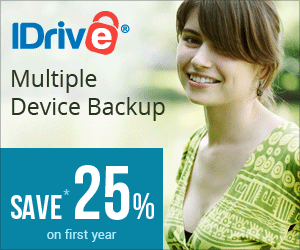Are you moving to virtual workspaces?
Is cybersecurity your primary concern?
Businesses are experiencing the influence of the COVID-19 pandemic across the globe. The virus impacted the health of our employees and stakeholders and dented the robustness of the business structure. It decreased the availability of resources and hampered our working culture.
From this havoc, work-from-home culture emerged, which brought a wide adoption of cloud workspaces or Workspace as a Service (WaaS).
Now, to execute daily functions, businesses collaborate over cloud workspaces, communicate, and operate efficiently.
However, the cybersecurity of online stored sensitive data is still a crucial concern. In the first six months of this year, cyberattacks increased by 29%, and ransomware attacks increased by 93%.
So, how do we manage cybersecurity with virtual desktop hosting? Are virtual workspaces safe? Let’s find out.
Can Virtual Workspaces Improve Cybersecurity
The pandemic has changed our workplace methodologies. It is still the catalyst for change, including societal, developmental, economic, and corporate changes. It has drastically increased the number of remote employees. We can manage these employees’ productivity and maintain security, but only when given the right tools.
WaaS is one such tool to manage cybersecurity and employee collaboration. Explore how:
1. Cloud Desktops Are Dynamic And Compliant Copies
WaaS is created dynamically on compliance copies of your operating system, applications, etc. Therefore, your IT infrastructure in a virtual workspace offers only the latest applications to the users, which are used to conduct business operations on a virtualized network.
Your audit team can easily evaluate and validate the activities of different end-users to ensure security controls and regulatory compliance. After evaluating the situation, your security or IT team can drift configuration for endpoints, including refreshing the cloud desktop to remove any potential infection from the system.
Here, we are removing the software configuration and security controls from users’ endpoints and offering the command to the IT team. This allows endpoints to meet security requirements and compliance.
For example, we can easily meet PCI standard compliance needs that ensure cardholder’s data, internal network protection, payment security, access control in systems, etc.
2. You Can Receive Disaster Recovery At Lower Costs
No enterprise can manage disruptions in the office caused by the unavailability of data and infrastructure, cyberattacks, an outbreak of coronavirus, or a natural disaster. All these disruptions reduce workplace efficiency and hamper working patterns to a significant extent.
WaaS allows hosting the entire workplace in a dynamic or virtual cloud environment. Based on the support and guidance required by different users, we can offer remote access to users during a disaster. It is possible to easily restore backed-up data from the cloud data centre at the time of an unknown disruption.
For example, when a flood ruins your endpoints or office computers, you can restore your entire virtual workspace from the backup stored on various data centres of the WaaS provider.
It is incredible to note that virtual desktop pricing for backup and recovery is lower than setting up this type of structure in the office separately.

3. Sensitive Data Is Secure On Cloud Data Centres
When you use WaaS, no information or application is on the endpoint, and the users are just accessing the data from the endpoint devices.
For example, an endpoint suffers a cyberattack. In this case, either the user can inform the IT team to revoke access, or the IT team can virtually monitor issues to refresh the cloud desktop on time.
Additionally, WaaS providers offer multiple security features such as 256-bit encryption, AI data monitoring, Intrusion Detection and Prevention systems, the latest antivirus and antimalware, and much more.

4. Cloud Desktops Use Isolated VPNs
Did you know that WaaS works in isolated VPNs? Once you create a virtual workspace, your remote users receive access to desktops on top of their OS layer. This sandboxing technique secures data and applications against memory mappers, keystroke loggers, and OS and app infections.

5. Secure Your Data With Access Management
Managing access to the virtual workspace is a crucial part of managing cloud cybersecurity. Cloud providers use multi-factor authentication or external firewalls to know whether the user is authentic or not. For example, only the people of your organization should be able to log in to the cloud environment. This is usually controlled via two-factor authentication.
Also, there are software firewalls that ensure internal access control. This means that not every employee of the business has access to every data file and application. For example, your freelancers can’t know accounting details or critical business strategies. But these employees still get access to the virtual workspace.
In short, you can decide access to each employee group and secure data from internal theft depending on the needs of your organization.
Conclusion
WaaS creates a secure harbor for business activities. When we store the data on the cloud, we can create a security mechanism. This security mechanism is driven by the excellence, experience, and guidance of the WaaS provider. As a small, medium, or enterprise-level business, you only need to focus on finding the right provider for improved cybersecurity in your virtual workspace.
Author Bio: Bhavleen Kaur is a content writer at Ace Cloud Hosting- a leading Cloud VDI Service Provider. She specializes in writing about VDI, DaaS, cloud technology, and cloud-based desktop & likes to know about upcoming technology and trends. In her free time, you can find her reading novels or watching movies.


